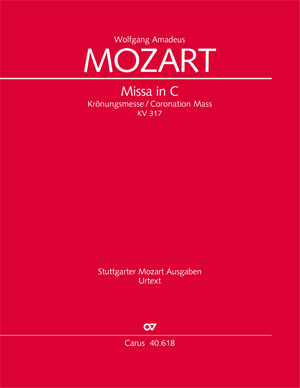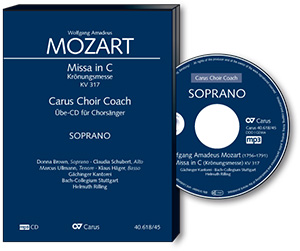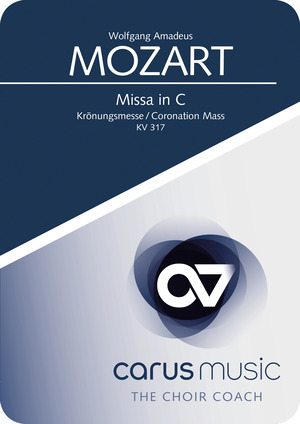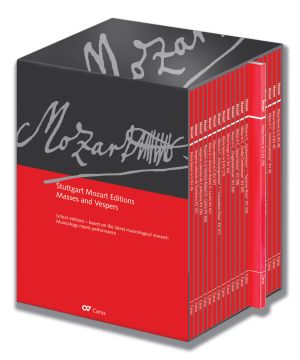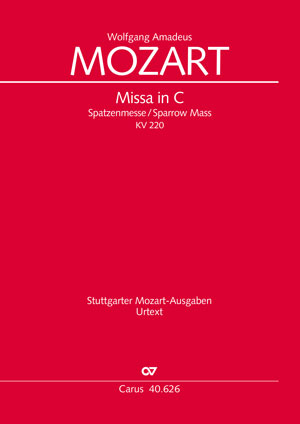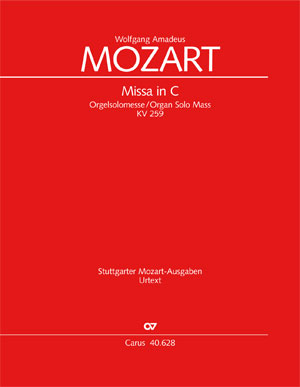-
Composer
Wolfgang Amadeus Mozart
| 1756-1791As the son of the deputy Kapellmeister to the Salzburg Prince-Archbishop, Mozart was constantly surrounded by church music in his youth. On his travels Mozart became familiar with Italian church music, and later in Vienna he studied the works of Bach and Handel. After moving to Vienna he was faced with the new challenges of composing opera and piano concertos, and significantly the “C Minor Mass” KV 427, the greatest sacred work of the first Vienna years, remained unfinished. The last period of his life again shows a change of direction to church music: Mozart successfully applied to succeed the terminally ill Leopold Hoffmann as Kapellmeister at St Stephen's Cathedral, but he was unable to take up the position as he died before Hoffmann. A gem such as the “Ave verum” KV 618 and the incomplete Requiem KV 626 give us an idea of what Mozart might have achieved as a composer of sacred music if he had taken up this important position. Personal details
-
Editor
Ulrich Leisinger
Reviews
Mozart, Wolfgang Amadeus (1756 - 1791): Missa in C; Krönungsmesse KV 317
Mozart, Wolfgang Amadeus (1756 - 1791): Missa in C; Krönungsmesse KV 317
Mozart Krönungsmesse einem Musikerkollegen anzuempfehlen, käme einem Müßiggang gleich. Ist es doch das Werk, das so mancher Kirchenchor in sein Repertoire eingebunden hat. Sollte dem nicht so sein, so besteht zumindest der große Wunsch, dieses Werk doch irgendwann einmal, wenn die Finanzen stimmen aufzuführen. Bei Betrachten des formalen Rahmens dieser Messe werden die Vorgaben durch Mozarts Dienstherrn Fürsterzbischof Colloredo deutlich. Die Einzelsätze sind sehr knapp angelegt, kontrapunktische Arbeit wie wir sie z.B. in den Schlussphasen von Gloria und Credo in Gestalt einer Schlussfuge kennen, fehlen gänzlich. Das Einbringen von Trompeten und Pauken versagt Modulationen in entlegene Tonarten. Auffällig in diesem Werk sind häufige Wechsel in Mollgeschlecht, aber nicht nur auf der Grundlage des Wort-Tonverhältnisses. An kompositorischen Neuerungen weist diese Messe Übertragungen von Innovationen aus der Entwicklung der Instrumentalmusik auf. So gibt es im Gloria und im Credo deutliche Hinweise auf eine wiederkehrende Anfangsthematik, die nahezu rondoartig wirkt und in der Wiederholung der Kyriethematik im Dona nobis pacem des Agnus Dei gipfelt. Ferner ist der obligate Einsatz der Blasinstrumente sicherlich auf die gewonnenen Erfahrungen mit der Mannheimer Schule zurückzuführen. Dieser Ausgabe geht ein ausführliches Vorwort voraus. Sehr interessant aber auch der kritische Bericht.
Also: Demnächst vielleicht eine Aufführung der Krönungsmesse materialmäßig unterstützt durch die Notenausgabe des Carus-Verlages.
Peter Bartetzky
Quelle: Musik im Bistum Essen 1/2001, S. 40f.
Frequent questions about this work
 There are no questions and answers available so far or you were unable to find an answer to your specific question about this work? Then click here and send your specific questions to our Customer Services!
There are no questions and answers available so far or you were unable to find an answer to your specific question about this work? Then click here and send your specific questions to our Customer Services!


